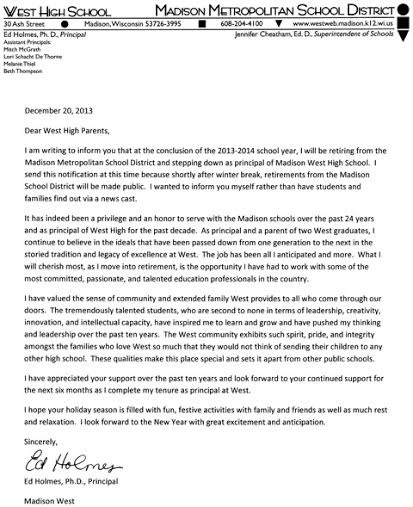Search Results for: %22Talented and gifted complaint%22
Commentary on Madison’s special Education and “inclusive” practices; District enrollment remains flat while the suburbs continue to grow
Pat Schneider: That was one issue that brought together family activists who formed Madison Partners for Inclusive Education [duckduckgo search] in 2003, Pugh said. “A parent in an elementary school on the west side could be seeing high-quality inclusive expert teaching with a team that ‘got it,’ and someone on the east side could be […]
Madison School District’s Talented & Gifted Plan 3 Pager (TAG)
Madison School District (205K PDF):
The BOARD is committed to providing a strong instructional program that results in student growth for all students, including advanced learners. The BOARD recognizes that many advanced learners have unique academic and social-emotional needs that may require additional supports or interventions beyond the strong core instruction that is provided within a general education classroom if they are to achieve growth in their identified domain(s). The BOARD further recognizes the need to create systems for identifying, monitoring and serving advanced learners that are culturally responsive and sensitive to the needs and experiences of students with the potential for high performance but who are underperforming and students from underrepresented groups. The BOARD is committed to engaging the parents and guardians of advanced learners through outreach to, communication with and the inclusion of parents and guardians in education decisions that affect their students. In order to actualize these commitments for all students, all schools must, through professional collaboration and with the input from parents and guardians, appropriately identify and serve all advanced learners, including students from underrepresented groups, students who evidence high potential but are underperforming and twice exceptional learners, using the identification, monitoring and intervention systems set forth in the BOARD-approved Talented and Gifted Plan.
A. Differentiated Instruction – A best practice for all instructional staff across all grade levels and subjects that involves modifying the classroom curriculum, instructional model and/or expected evidence of learning to meet unique student needs within the classroom.
B. Advanced Learner – A student who demonstrates high performance capability or the potential for high performance in one or more of the following domains and requires enrichment and/or intervention beyond differentiated core instruction. The domains are general intellectual, creativity, specific academic, leadership and visual and performing arts.
C. Interventions – Research-based instructional practices and programs used systematically to provide support to students who exceed academic or behavioral benchmarks or who evidence high potential but have not yet demonstrated high performance. Interventions, which are provided in addition to or in replacement of differentiated, grade-level core instruction, are used to systematically provide an enhanced opportunity to learn, scaffold learning for students whose mastery of skills or content are below what is expected and/or provide a faster pace of learning.Much more on the talented & gifted program, here and a parental complaint.
Madison West High School Principal to Retire in 2014; Tenure included Controversial Curricular Initiatives
Madison West High School Principal Ed Holmes (PDF), via a kind reader’s email.
A number of controversial curricular initiatives occurred during Holmes’ reign, including the implementation of “one size fits all” English 10, a parent TAG complaint, small learning communities and various “high school redesign” plans.
Madison’s Lake Wobegon schools?
Nearly 30 percent of the students at Madison’s Marquette Elementary School were classified last year as “talented and gifted,” or TAG, according to the school district.
That may not be Lake Wobegon territory — where “all the children are above average” — but it’s still pretty hard to believe.
Such alleged widespread student giftedness isn’t just the case at one district school.
Yes, there are wide variations among Madison elementary and middle schools in percentage of TAG students, but figures from the district suggest that on average districtwide, there are about twice as many TAG students as one would expect given national averages and expert opinion.
The National Association for Gifted Children estimates that about 6 percent of American school children are gifted.
The federal government’s National Center for Education Statistics put the gifted and talented number at 6.7 percent as of 2006, the most recent year for which data are available.Much more on “talented & gifted” programs, here, including a recent parent group complaint.

